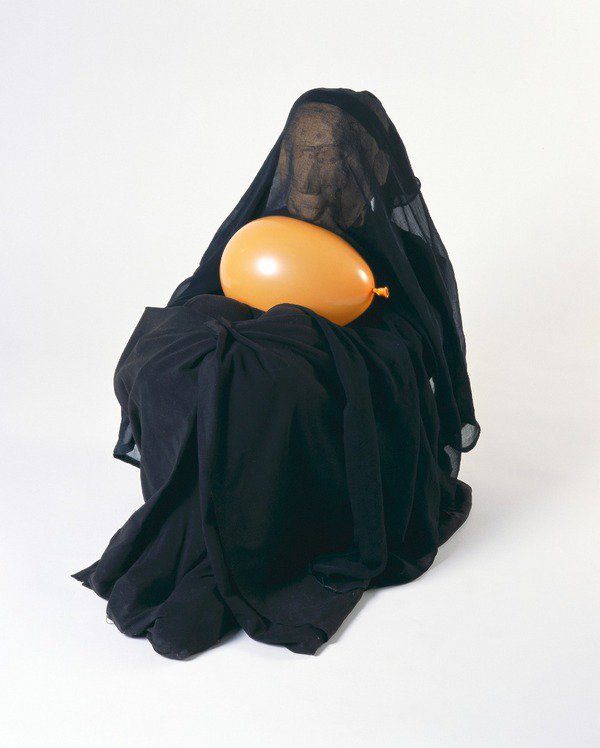[silence]
dal 9/7/2014 al 27/9/2014
Segnalato da
Ádám Albert
Azorro
Balázs Beöthy
Sándor Bodó
Stefan Constantinescu
Róza El-Hassan
Marcell Esterházy
Pál Gerber
Tibor Horváth
Tamás Kaszás
Little Warsaw
Eva Kot’átková
Erika Lakatos
Zbigniew Libera
Miklós Mécs
Omara
Uriel Orlow
Ekaterina Shapiro-Obermair
Rita Süveges
Norbert Szirmai
János Révész
Raša Todosijević
Camilo Yáñez
Katalin Timár
9/7/2014
[silence]
Ludwig Museum, Budapest
A Holocaust Exhibition. The exhibition that presents a selection of artworks by both international and local contemporary artists, intends to go beyond the historicizing view that regards Holocaust as a one-off, past event in our history.

Curated by Katalin Timár
A new temporary exhibition is opening at the Ludwig Museum
The exhibition [silence] – A Holocaust Exhibition at the Ludwig Museum provides an overview of the representation of the Holocaust-theme in contemporary art. The exhibition that presents a selection of artworks by both international and local contemporary artists, intends to go beyond the historicizing view that regards Holocaust as a one-off, past event in our history. Thus, a group of the exhibits calls our attention also to the fact that some among those tendencies, ideologies then leading to a genocide, still affect and influence our everyday life even in our present days.
In fact, the earliest representations of the Holocaust go back to the period of WW II. A part of these artistic renderings were made by survivors, many of whom had already created various artworks while in the concentration camps – which might supposedly have also helped them to survive. The other group of depictions stem from journalists and soldiers who actually had been to these camps when freeing prisoners. They made shots about the circumstances they encountered there, from the beginning with the intention of documentation, so with an intention to set up a sort of historical perspective. “Historicising” also serves the aims of mentally processing a traumatic event, as it „delegates” the traumatic events to the past, thus transforms temporal into psychological distance.
According to Katalin Timár, curator of the exhibition, the possibility of artistic representability arises questions continuously in a way similar to the debate among historians in the 1970’s and 80’s on the historical representability of the Holocaust. From this point of view probably the most important ideological frame is given by the notion of “Holocaust effect” introduced by Dutch literary theorist Ernst van Alphen.
Artworks illustrating the Holocaust via the Holocaust-effect represent the structural reasons and circumstances of the events that transpired (for instance people being deprived of their individuality, industrial scale genocide, the operation of the ideologies serving as background, etc.). On the other hand, representations mark no fixed position for the recipient, or if they do, this position is not restricted to the identification with the victim.
Of course, the possibility of identifying with the perpetrator is uncomfortable for the viewer, but this is exactly what makes it possible for anyone to see the Holocaust as more than a discrete historical event of the past that is not related in any way to our present days; also it helps to become involved to ask oneself political and ideological questions regarding the present. In the Summer of 2014 it is clear that the very ideologies leading to the war, Nazism and the Holocaust have not ceased to exist with the end of WW II. Nowadays – especially on account of mass migration and globalization – these prejudices and attitudes do not even exclusively target Jews, but also other ethnicities and minorities.
Exhibiting artists:
Ádám Albert, Azorro, Balázs Beöthy, Sándor Bodó, Stefan Constantinescu, Róza El-Hassan, Marcell Esterházy, Pál Gerber, Tibor Horváth, Tamás Kaszás, Little Warsaw, Eva Kot’átková, Erika Lakatos, Zbigniew Libera, Miklós Mécs, Omara, Uriel Orlow, Ekaterina Shapiro-Obermair, Rita Süveges, Norbert Szirmai / János Révész, Raša Todosijević, Camilo Yáñez
as well as DLA students who attended the course \"Researching art\" at the Doctoral School of the Faculty of Music and Visual Arts, University of Pécs (Balázs Beöthy, László Bicskey, Zsófia Bogár, Imre Farkas, Nóra Gábor-Nagy, György Gáspár, László Győrffy, Zsigmond Lucza, Alpár Péter, Péter Simon, Klarisz Szabó, István Szántó, Orsolya Sztrakay, Theodoros Tosounidis, Orsolya Zrínyi)
Image: El-Hassan Róza: R. a túlnépesedésről gondolkodik / R. thinking/dreaming about overpopulation, 1999-2003. fotó / photo: evn collection, Maria Enzersdorf, Austria; © Jens Preusse for evn collection
Deputy Director of Marketing and Communications
Zsuzsanna Fehér
zsuzsanna.feher@ludwigmuseum.hu
Tel.: 06 1 5553466
PR and Events Assistant
Viktoria Macsuga
macsuga.viktoria@ludwigmuseum.hu
Tel: 06 1 5553468
Opening ceremony: July 10, 2014 Thursday, 6 p.m.
Ludwig Museum
Komor Marcell u. 1 (Palace of Arts) - Budapest
SPECIAL SUMMER OPENING HOURS APPLY
BETWEEN 7 JULY AND 27 AUGUST 2014
Permanent exhibition as well as temporary exhibitions:
Tuesday-Sunday: 10.00-18.00
Closed on Mondays.



